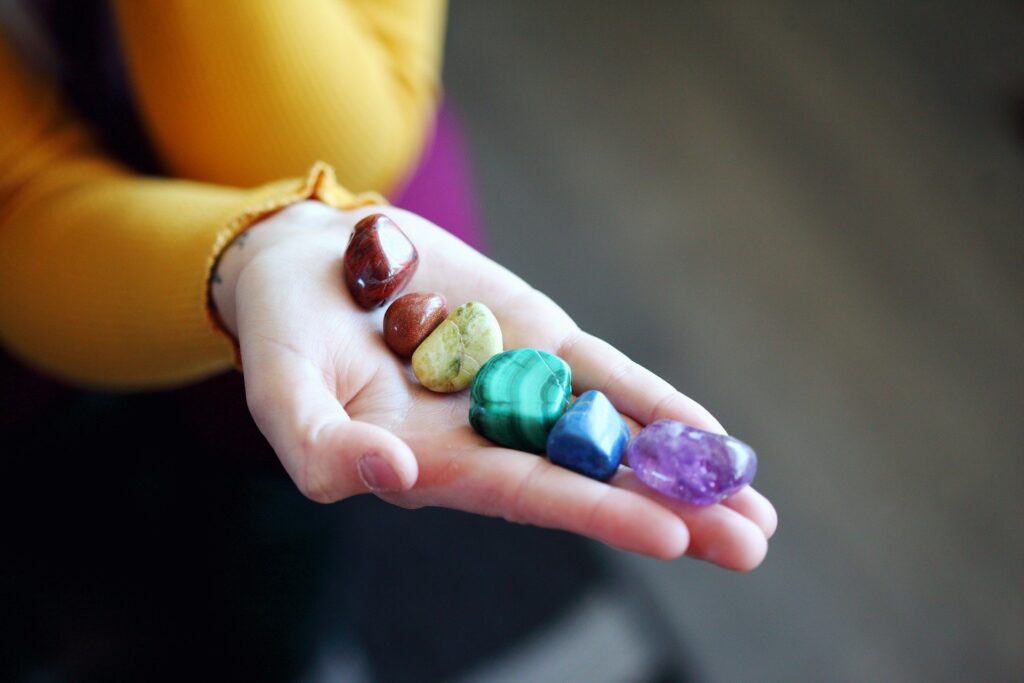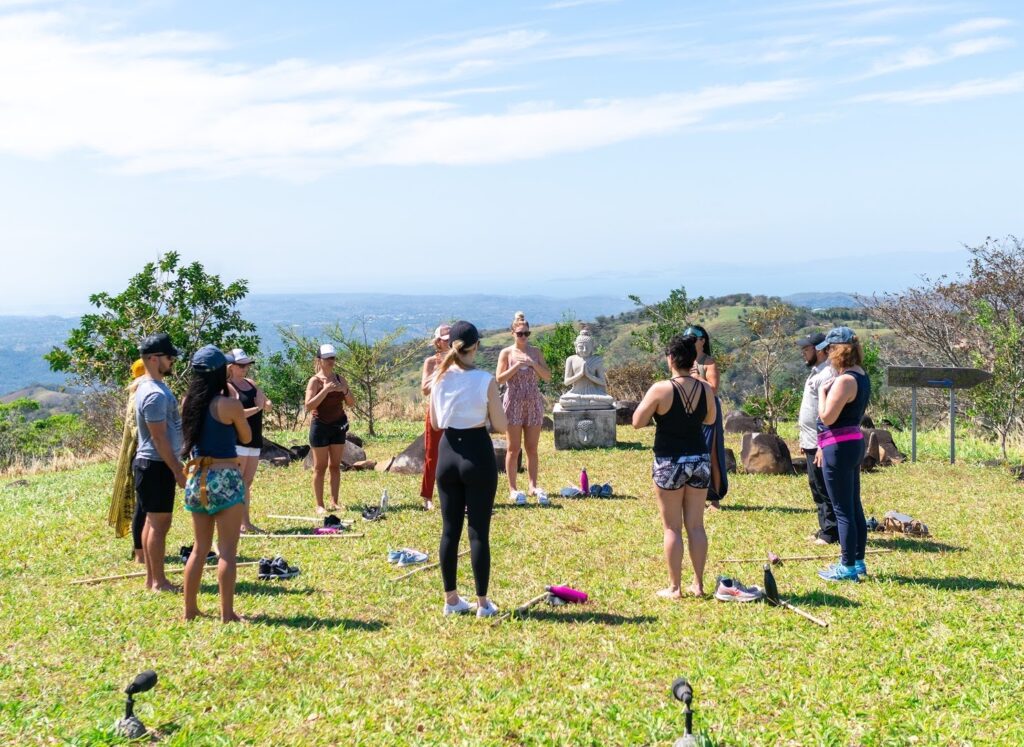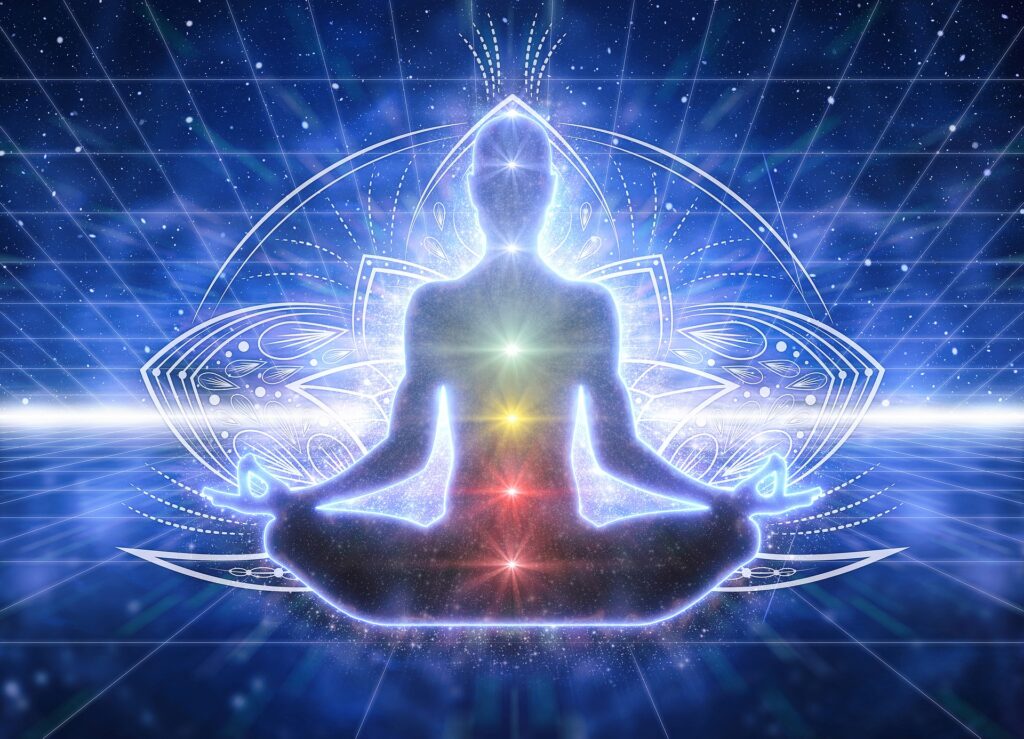
Guest Contributor – Jessica Hutto
Let’s be honest. We are all in search of balance. Work-life balance, harmonious relationships, balanced diets, organized schedules, the list goes on. We’re told to get more sleep, eat right and exercise. But that might not be enough.
Introducing the chakras. Visualize your body with seven rechargeable batteries. Each is responsible for a different area that regulates your body’s mental and physical processes – basically keeping you in check. If situations or patterns in life begin to overwhelm your thoughts and diminish your capacity to perform at your best, it’s a sign that one or more of your batteries is drained. Knowing more about each chakra opens new ways to recharge, heal yourself and regain balance in your day-to-day life.
Chakras 101
Everything around us is made of energy, including the body we live in. In light of this, many traditions have long recognized the complex system of subtle energy centers in the human body called Chakras, which is Sanskrit for “wheel” or “circle.” These wheels or disks of spinning energy correspond to the seven main centers in your body. These centers communicate with certain nerve bundles and major organs. The chakras take in the life force energy (also known as prana, or chi) and distribute it to the rest of our body. With balanced chakras, this energy can flow freely. This is also when we feel our best mentally, physically, and spiritually.
Each chakra corresponds to a physical part of our body and also different emotional states. When there is a block in this energy system, it causes an imbalance in that chakra. This can manifest as physical dis-ease and emotional issues. The chakras serve as our roadmap on our journey in this lifetime. We can look within ourselves and ask what we are feeling at any moment. From there, we can use that knowledge to shed light on which chakra may need balancing or healing.
In this article, we’ll take a closer look at your main chakras. Each has a specific name (both common and Sanskrit), location, color and function. Many relate to specific natural elements and certain natural stones can be instrumental in attaining equilibrium. Read on to discover the purpose of each chakra and learn some of the signs of blockages or imbalances. For each one, we’ll offer practical tips to develop and rebalance these important energy centers.
Muladhara – Root Chakra
The root chakra is located at the base of the spine and is associated with the colors red and (to a lesser degree) black and the element of Earth. It is the energy center responsible for a person feeling supported, secure, and grounded in life. When unbalanced, a person might feel fearful, have trouble making or holding onto money, and feeling ungrounded.
A great way to help bring balance to this energy center is to practice grounding. This is the simple practice of placing your bare feet on the Earth. Incorporate the use of stones like hematite, red jasper and obsidian to your daily routines as well.

Our on-site forest therapy sessions are a perfect opportunity for grounding barefoot meditation.
Svadhisthana – Sacral Chakra
The 2nd chakra is the sacral chakra, located below the navel. The color is orange and the element associated is water. This chakra regulates our healthy feelings of sexuality, sensuality, pleasure, creativity, and going with the flow of life. When off-balance, a person might feel rigid, guilty for experiencing the good in life, or either over or under sexual.
Carnelian, moonstone and orange calcite help balance this chakra. Creative artistic activities and dancing also dramatically help bring this energy center into balance.
Manipura – Solar Plexus Chakra
The 3rd chakra, the solar plexus chakra, is located above the navel. It is associated with the color yellow and the element of fire. This chakra is responsible for our feelings of confidence, motivation, drive, and courage. Physically, an imbalance can show up as a digestive issue. Emotionally, it manifests itself as a lack of confidence and drive. On the other hand, it can cause perfectionism and an overwhelming need for control.
Placing yourself in a power pose, ideally in the presence of tiger’s eye, citrine, amber or topaz stones can help activate this chakra. For instance, place your hands against your hips and press your shoulders back and your chest out in a standing position.

Warrior poses are also strong power poses. Transition into reverse warrior for effective heart opening.
Anahata – Heart Chakra
The heart chakra is located across the chest and is represented by the color green and the element of air. The lower three chakras connect to the physical world, while the upper three chakras connect to the spiritual. The heart chakra is the bridge between these two spaces.
A person with a balanced heart chakra is empathetic and compassionate with a healthy attachment style. When off-balance, a person might deal with feelings of anger, grief, resentment, or have poor energetic boundaries.
Wearing necklaces that locate stones like rose quartz, aventurine, malachite and moss agate near the heart and practicing self-love rituals can bring this chakra into balance. Focus on heart opening yoga poses and reciting mantras to shift energy toward love and unlock the heart center.
Visshudha – Throat Chakra
This fifth chakra is located at the throat. Its color is blue and coincides with the element of ether. The throat chakra represents self-expression, good communication, authenticity, and integrity. An imbalance in this chakra may appear in several forms such as shyness, overtalking, or not showing others the “real” version of yourself. Similarly, it can cause trouble expressing your thoughts.
Breathing practices, singing, and saying positive affirmations out loud are ways to balance this energy center. Stones like blue lace agate, angelite, and turquoise aid your expressive equilibrium as well.

Journaling or free writing is another powerful method to express your inner voice and also to connect with your intuition.
Ajna – Third Eye Chakra
The sixth chakra is known as the third eye or brow chakra. It is located between the eyebrows and has no element associated with it. It radiates the color indigo. Chiefly intuition, discernment, clarity, and insight all represent a balanced third eye chakra. When out of balance, you might feel disconnected from your intuition, lack self-trust, or feel confused about your path.
Stillness helps bring the third eye back into balance, as it allows you to go within and get to know and feel your intuition. With this in mind, meditation is key. Stones like lapis, sapphire and sodalite connect with this chakra.
Sahastrara Chakra – Crown chakra
The seventh chakra, the crown chakra, is located at the top of the head. This chakra is associated with the color purple and the amethyst, selenite and clear quartz stones. The crown chakra is the energy center responsible for feelings of enlightenment, connection, and spirituality. For this reason, an unbalanced crown chakra can look like depression, feeling separate, or egotistical.
Humming or chanting the sound “OM”, saying prayers, burning sage and/or palo santo, and practicing the headstand yoga pose can all help bring this chakra into balance.

Only the beginning
In conclusion, knowing about the chakras and how to bring them into balance allows you to take an active role in your self-healing and spiritual journey. Regardless of your experience in this area, there are hundreds of ways to bring increased balance to your energy centers. Most notably among these are emotional freedom techniques (EFT), reiki, meditation, affirmations, diet, breath work, and yoga, just to name a few. Furthermore, essential oils and foods are also associated with each chakra and can be therapeutic as well. The examples listed above, therefore, are just the beginning. Above all, we encourage you to discover the balancing tools that resonate with you most and to commit to a consistent practice to see the greatest benefit in your own life.
If you’re not sure where to start, or you just want to know more about your own chakras and how they may affect you, consider working with a professional. This could be an energy healer, such as a reiki practitioner, or a certified yoga instructor. Many of our retreats also offer opportunities to guide you deeper into this understanding of the chakras.
Jessica Hutto is a highly regarded healer, facilitator, mentor, and speaker. Founder of the Chakra Healing Certification Program and Divine Maven brand, she helps clients focus on energy management and intuitive development for a thriving life and business. She is certified in energy therapy, transformational coaching, EFT, and Reiki. She finds purpose in mentoring women to lead through heart-centered values in their business. Learn more about Jessica
Thanks also to Kitty Packman for her contribution to this article.

